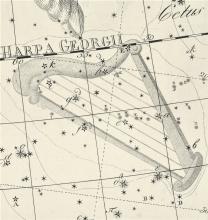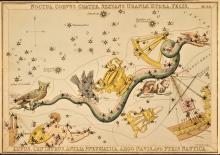Listen to today's episode of StarDate on the web the same day it airs in high-quality streaming audio without any extra ads or announcements. Choose a $8 one-month pass, or listen every day for a year for just $30.
You are here
Caelum
The boldest and brightest of all constellations wheels across the south on February nights: Orion. It’s marked by the hunter’s bright belt of three stars, surrounded by a box of four bright stars.
One of the meekest and faintest constellations also wheels across the south on February nights. Caelum, the chisel, is due south a couple of hours after sunset. It sits directly atop the horizon for those at the middle latitudes of the U.S., and a little higher for those farther south.
No matter where you are, though, it’s not much to look at — a few stars that are so faint that you need a dark viewing site to see them at all.
The constellation was first published by Nicolaus Louis de la Caille. The French astronomer visited the southern tip of Africa in the mid-1700s. He made detailed catalogs and maps of the southern stars. When he published his findings, he included 14 new constellations made from those stars. Most of them were named for scientific or artistic instruments.
La Caille named this constellation Caelum Sculptorium — “the engraver’s chisel.” Later, other astronomers shortened the name to just Caelum.
Its brightest star is actually two stars — a binary system about 65 light-years away. The main star is hotter and brighter than the Sun. Its companion is a red dwarf — a cosmic ember that’s not visible without a telescope. But even the bright star is barely visible — a pale dot in a pale constellation chiseled from the southern sky.
Script by Damond Benningfield






